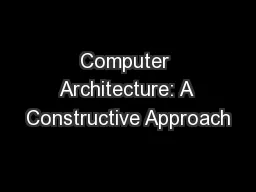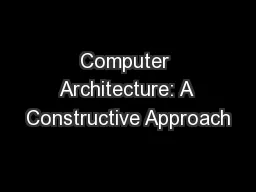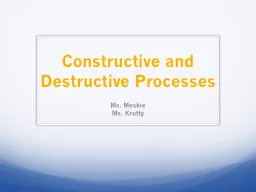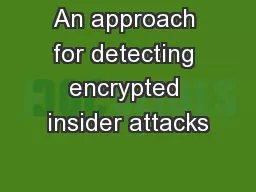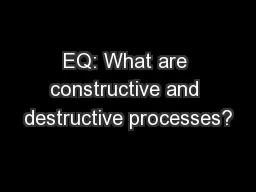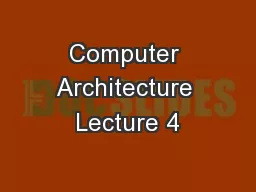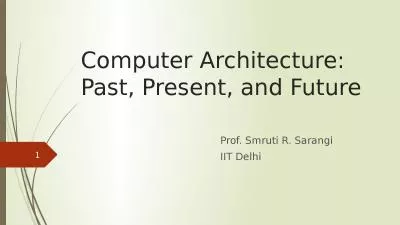PPT-Computer Architecture: A Constructive Approach
Author : lois-ondreau | Published Date : 2016-10-19
Branch Prediction 1 Arvind Computer Science amp Artificial Intelligence Lab Massachusetts Institute of Technology April 9 2012 L16 1 httpcsgcsailmitedu6S078 Icache
Presentation Embed Code
Download Presentation
Download Presentation The PPT/PDF document "Computer Architecture: A Constructive Ap..." is the property of its rightful owner. Permission is granted to download and print the materials on this website for personal, non-commercial use only, and to display it on your personal computer provided you do not modify the materials and that you retain all copyright notices contained in the materials. By downloading content from our website, you accept the terms of this agreement.
Computer Architecture: A Constructive Approach: Transcript
Download Rules Of Document
"Computer Architecture: A Constructive Approach"The content belongs to its owner. You may download and print it for personal use, without modification, and keep all copyright notices. By downloading, you agree to these terms.
Related Documents

